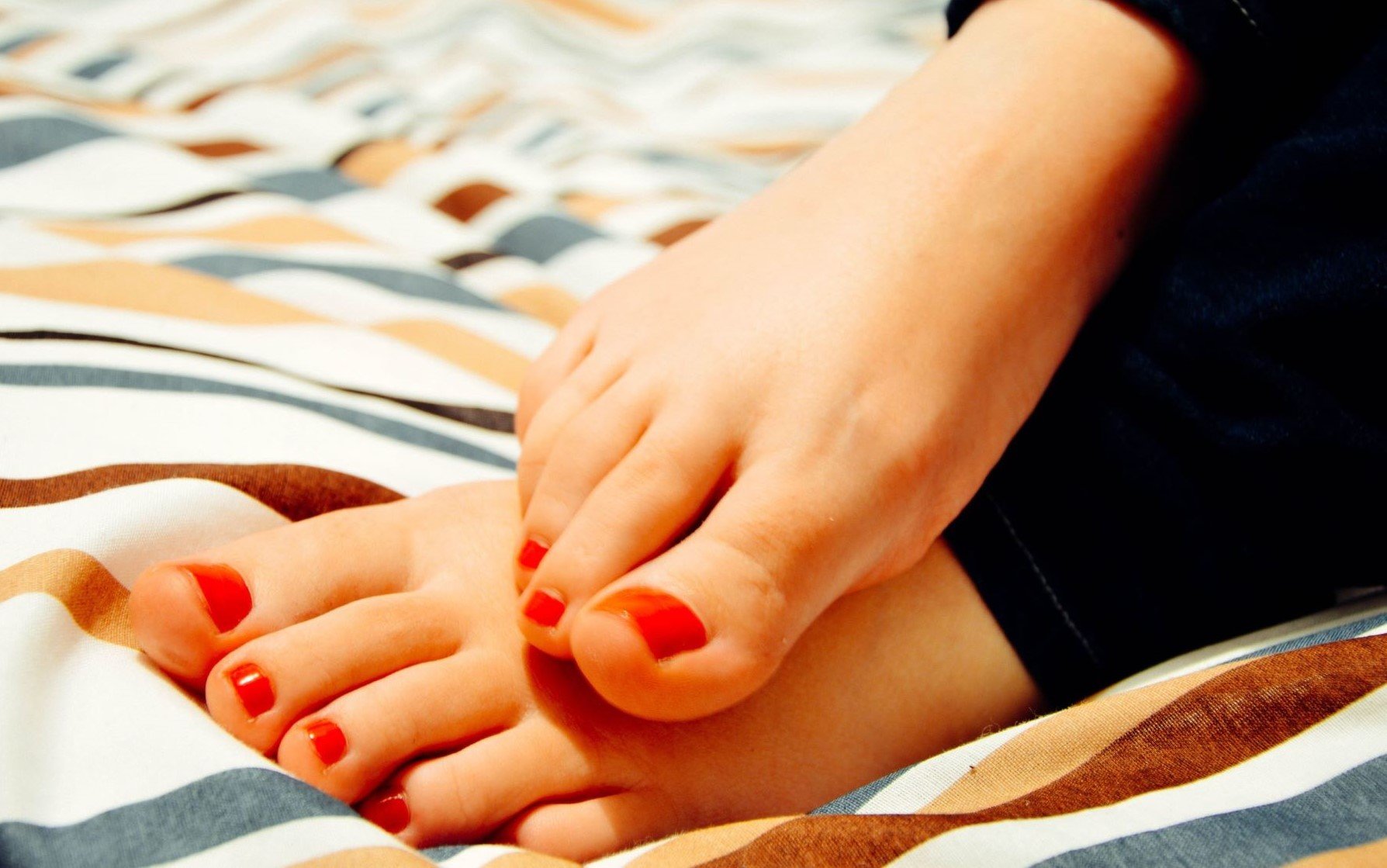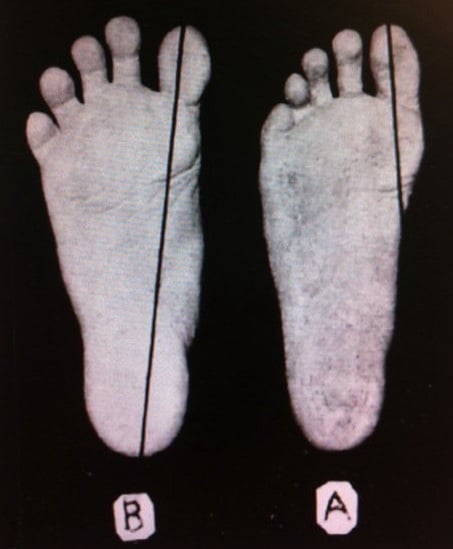
Orthopedists argue that walking barefoot makes stronger, more flexible feet and fewer deformities while the practice enhances mobility, as well.
Anthropologists concur, saying that several studies show that prehistoric humans had wider feet, more splayed out toes, and more robust skin on the soles than do modern humans.
Anthropological research indicates that humans had used footwear as long as forty thousand years ago. The feet of those people already showed differences from those of humans who lived two hundred thousand years ago.
Specifically, before early humans began using footwear, their feet had thicker, bigger toe and leg bones. Once they started wearing shoes about forty thousand years ago, their toe bones began to shrink in size.
However, there are more reasons for going barefoot because this particular activity contributes to a much healthier life overall.

Walking is grounding/earthing oneself
Walking barefoot on the earth is now being called “grounding” or “earthing.” The idea behind this is that the earth is essentially a huge body, which is negatively charged.
This charge theoretically comes from electrons and is a provider of antioxidants that contribute to the proper functioning of the human body.
Exposing oneself to the soil on the ground can benefit us, as well, as the powerful microbes found in soils help build immunity naturally.
Microbes enter our body through the skin from under our nails and feed the good bacteria in our stomach microflora, making us stronger and healthier and thereby boosting our immune system.
The National Library of Medicine published a study on January 12, 2012, named “Earthing: Health Implications of Reconnecting the Human Body to the Earth’s Surface Electrons.” Regarding its conclusion, the following text was written:
Since the late 20th century, chronic degenerative diseases have overcome infectious disease as the major causes of death in the 21st century, so an increase in human longevity will depend on finding an intervention that inhibits the development of these diseases and slows their progress. Could such an intervention be located right beneath our feet? Earthing research, observations, and related theories raise an intriguing possibility about the Earth’s surface electrons as an untapped health resource—the Earth as a “global treatment table.” Emerging evidence shows that contact with the Earth—whether being outside barefoot or indoors connected to grounded conductive systems—may be a simple, natural, and yet profoundly effective environmental strategy against chronic stress, ANS dysfunction, inflammation, pain, poor sleep, disturbed HRV, hypercoagulable blood, and many common health disorders, including cardiovascular disease. The research done to date supports the concept that grounding or earthing the human body may be an essential element in the health equation along with sunshine, clean air and water, nutritious food, and physical activity.
According to Dr. James Oschman, author of Energy Medicine: The Scientific Basis, people who walk barefoot on the ground for some time directly enhance the health of their body.
At the same time, that individual will also have feelings of well-being generated by and associated with this energy.
It is no coincidence that many cultures around the world refer to the process of grounding as a sacred and beneficial act for man.
According to Oschman, the process of grounding can prevent the occurrence of degenerative diseases as well as enhance many of the body’s functions.
Furthermore, through daily barefoot walking on the surface of the earth, chronic stress, back pain, and even insomnia can be cured, he believes.
He states that research indicates that walking barefoot on the ground is as important for good health as having access to clean water, fresh air, and sun during the day.

Studies concur on the importance of walking barefoot
Another study by the U.S. Army Medical Research and Development Command found that subjects who walked barefoot for twenty minutes on the ground showed lower levels of urea in their blood.
The activity also increased protein metabolism, creating a better nitrogen balance in the body. Based on the same research, scientists report that it is no coincidence that many athletes choose to run barefoot for some part of their training.
This is in order to indirectly and directly enjoy this positive effect on the results and performance in their sport.
An even more recent study in the UK linked the flow of blood in the face to barefoot walking on earth.
People who walked barefoot on the ground for thirty minutes continuously showed better blood flow to the face and other body parts. This shows the importance of grounding in improving the human cardiovascular and nervous systems, researchers say.
According to the Journal of Inflammation Research, grounding can even cure symptoms of an infection from injury such as redness, swelling, pain, and loss of muscular function among other things.
This is because we allow the earth’s electrons to enter our body, thus creating an antioxidant environment which simultaneously enhances many of the body’s internal functions.
Our natural walking pattern
According to Dr. Jonathan Kaplan, an orthopedic surgeon “The most straightforward benefit to barefoot walking is that in theory, walking barefoot more closely restores our ‘natural’ walking pattern, also known as our gait.”
Certain orthopedists insist that many shoes for hiking and running, or simply for walking, have excessive cushioning and support that can prevent the use of certain muscle groups which can actually strengthen the body.
Moreover, walking on the ground without shoes offers better foot mechanics, possibly lead to improved mechanics of the hips, knees, and core, and to stronger leg muscles, which support the lower back region.
Did the ancient Greeks walk barefoot?
Ancient Greek statues and paintings often have barefoot subjects even though many are also portrayed with sandals.
The Peleies (plural of Peleia) were female priests of Zeus while Dion’s priests were Selloi (plural of Sellos).
In the Iliad, Homer says that the Selloi slept on the ground, walked barefoot, and never washed their feet, indicating their identification with the earth and nature, the annual cycle of which is a key theme of the mysteries of antiquity.
The Selloi were an ancient Greek tribe inhabiting Epirus, in a region between Dodona— site of the oldest reported oracle—and the Achelous River. Aristotle named the area “ancient Hellas.”
Sources: Healthline.com, Wikipedia
See all the latest news from Greece and the world at Greekreporter.com. Contact our newsroom to report an update or send your story, photos and videos. Follow GR on Google News and subscribe here to our daily email!



